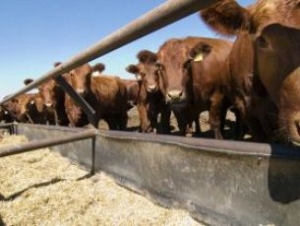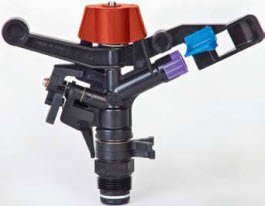News
CME: Number of Average Cattle on Feed on 1 April Expected to be Higher Than a Year Ago


There is broad expectation among analysts and market participants that feedlots placed fewer cattle on feed in March but on feed numbers are still expected to be significantly higher than a year ago. It is not unusual for feedlot placements to increase in March, in part because producers pull feeders from wheat pastures and send them to the feedlot.

Last year placements in March were particularly high at 2.117 million head, +12 per cent vs. 2016 and +16 per cent vs. the five year average at the time. This year placements are expected to be more in line with historical levels.
Additionally, analysts think that producers were forced to pull feeders from wheat pastures earlier than usual this year due to drought pressures in Kansas, Texas and Oklahoma. Placements were larger than expected in January and February, implying lower placements in March.
Auction sales data also appears to support this view. The chart below shows feeder and stocker sales data, which is reported weekly by USDA. We focused specifically on sales of animals that were over 600 pounds as they make up the bulk of placements.

During the period 3 March through 30 March, sales of feeders and stockers over 600 pounds averaged 182,777 head per week, down 24 per cent compared to the same period a year ago. Sales of all feeders and stockers during this period averaged 287,375 head/wk, 17 per cent less than the same period a year ago. Lower prices likely limited the number of feeder cattle that changed hands.
Additionally, consider the very different dynamic in the fed cattle market this year compared to a year ago. Last year feedlots were quite current coming into the spring and prices for fall fed cattle were going up. Demand for feeders was quite strong, pushing more animals into yards. As a reference, fed cattle futures for the October 2017 contract rose as much as 5.5 per cent during March 2017.
This year, fed cattle futures for October 2018 started the month at around $115/cwt but then steadily declined and by the end of the month October fed cattle were priced at $105/cwt, 8.5 per cent lower. Some market participants also point to feedlots being quite full, which may have further limited demand for feeder placements in March.
The number of cattle on feed on 1 April on average is expected to be 7.6 per cent higher than a year ago. This number is a function of both placements and marketings. Analysts on average expect marketings to be down 4 per cent compared to a year ago. Keep in mind there was one less marketing day this year.
The 4 per cent decline estimated by analysts fits with the number of steers and heifers slaughtered during the month, which showed a 4.3 per cent y/y drop. Feeder cattle imports were sharply lower in March, as well. Imports from Mexico were down 30k head (-19.5 per cent) and imports from Canada were down 1.3k head (-28 per cent).























